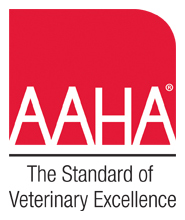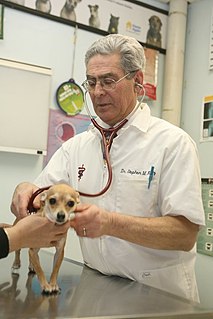
Veterinary medicine is the branch of medicine that deals with the prevention, control, diagnosis, and treatment of disease, disorder, and injury in animals. Along with this, it deals with animal rearing, husbandry, breeding, research on nutrition, and product development. The scope of veterinary medicine is wide, covering all animal species, both domesticated and wild, with a wide range of conditions that can affect different species.

A veterinarian (vet), also known as a veterinary surgeon or veterinary physician, is a medical professional who practices veterinary medicine by treating diseases, disorders, managing reproductive health and injuries in non-human animals. Along with this, Vets also play vital role in animal reproduction, animal health management emphasizing on animal reproductive health, conservation, breeding and preventive medicine like animal nutrition, bio security.

The Association of Zoos and Aquariums (AZA), originally the American Association of Zoological Parks and Aquariums, is an American 501(c)(3) nonprofit organization founded in 1924 dedicated to the advancement of zoos and public aquariums in the areas of conservation, education, science, and recreation. AZA is headquartered in Silver Spring, Maryland, United States and accredits zoos. There are 238 accredited facilities as of 2019, primarily in the US, but also a handful in eleven other countries.

The American Veterinary Medical Association (AVMA), founded in 1863, is a not-for-profit association representing more than 97,000 veterinarians in the US.
The National Association of State Public Health Veterinarians (NASPHV) develops and publishes uniform public health procedures involving zoonotic disease in the United States and its territories. These veterinarians work closely with emergency rooms, legislators, local officials, schools, health departments, and the general public to prevent disease exposure and control diseases that are transmitted to humans from animals and animal products.
The Virginia–Maryland College of Veterinary Medicine is a state-supported college of two states, Virginia and Maryland, filling the need for veterinary medicine education in both states. Students from both states are considered "in-state" students for admissions purposes.
A veterinary specialist is a veterinarian who specializes in a clinical field of veterinary medicine.

The U.S. Army Veterinary Corps is a staff corps of the U.S. Army Medical Department (AMEDD) consisting of commissioned veterinary officers and Health Professions Scholarship Program (HPSP) veterinary students. It was established by an Act of Congress on 3 June 1916. Recognition of the need for veterinary expertise had been evolving since 1776 when General Washington directed that a "regiment of horse with a farrier" be raised. It has evolved to include sanitary food inspectors and animal healthcare specialists.
The Veterinarian's Oath was adopted by the American Veterinary Medical Association's House of Delegates July 1969, and amended by the AVMA Executive Board, November 1999 and December 2010.
Being admitted to the profession of veterinary medicine, I solemnly swear to use my scientific knowledge and skills for the benefit of society through the protection of animal health and welfare, the prevention and relief of animal suffering, the conservation of animal resources, the promotion of public health, and the advancement of medical knowledge.
I will practice my profession conscientiously, with dignity, and in keeping with the principles of veterinary medical ethics. I accept as a lifelong obligation the continual improvement of my professional knowledge and competence.

Veterinary education is the tertiary education of veterinarians. To become a veterinarian, one must first complete a veterinary degree in Doctor of Veterinary Medicine.
A veterinary pharmacist is a specially trained pharmacist who dispenses veterinary drugs and supplies or products and advice to owners of companion animals and livestock. In addition, they advise the regulatory bodies and are involved in the formulation of veterinary drugs.

The American Animal Hospital Association (AAHA) is a non-profit organization for companion animal veterinary hospitals. Established in 1933, the association is the only accrediting body for small animal hospitals in the U.S. and Canada. The association develops standards for veterinary business practices, publications, and educational programs. Any veterinary hospital can join AAHA as a member, but must then pass an evaluation in order to receive AAHA accreditation.
Veterinary ethics is a system of moral principles that apply values and judgements to the practice of veterinary medicine. As a scholarly discipline, veterinary ethics encompasses its practical application in clinical settings as well as work on its history, philosophy, theology, and sociology. Veterinary ethics combines veterinary professional ethics and the subject of animal ethics. It can be interpreted as a critical reflection on the provision of veterinary services in support of the profession's responsibilities to animal kind and mankind.

One Health is "the collaborative efforts of multiple disciplines working locally, nationally, and globally, to attain optimal health for people, animals and our environment", as defined by the One Health Initiative Task Force (OHITF).

Paraveterinary worker is the professional of veterinary science that performs procedures autonomously or semi autonomously, as part of a veterinary assistance system. The job role varies throughout the world, and common titles include veterinary nurse, veterinary technician and veterinary assistant, and variants with the prefix of 'animal health'.

Veterinary medicine in the United States is the performance of veterinary medicine in the United States, normally performed by licensed professionals, and subject to provisions of statute law which vary by state. Veterinary medicine is normally led by veterinary physicians, termed veterinarians or vets.
The Federation of Veterinarians of Europe (FVE) is a non-profit umbrella organisation of veterinary organisations from 38 European countries. It was founded in 1975 and nowadays represents around 200,000 European veterinarians. The FVE strives to support veterinarians in delivering their professional responsibilities and representing the veterinary profession to the outside world. The FVE provides a platform for veterinarians across Europe to interact, to discuss and to develop position papers and professional guidelines. The current FVE motto is: "Veterinarians care for animals and people!" FVE publishes 4 times a year a newsletter which can be found on the FVE website.
The Canadian Veterinary Medical Association (CVMA), founded in 1876, provides leadership on national veterinary issues, advocates for animal welfare, and works to encourage life balance in veterinary professionals.
The World Veterinary Association is a federation representing more than eighty veterinary medical associations around the world. Its objective is to promote animal health and welfare and the realisation that animals and man live interconnected lives. It works on behalf of its member organisations with the World Health Organization, the Food and Agriculture Organization, the World Organisation for Animal Health and others to further the interests of animals, humans and the environment we all live in.
The Association of American Veterinary Medical Colleges (AAVMC) represents colleges and schools of veterinary medicine in the United States, Canada, and internationally. It advocates for issues related to veterinary medical education, oversees the accreditation process for veterinary medical schools and colleges along with the American Veterinary Medical Association, and manages the Veterinary Medical College Application Service.








